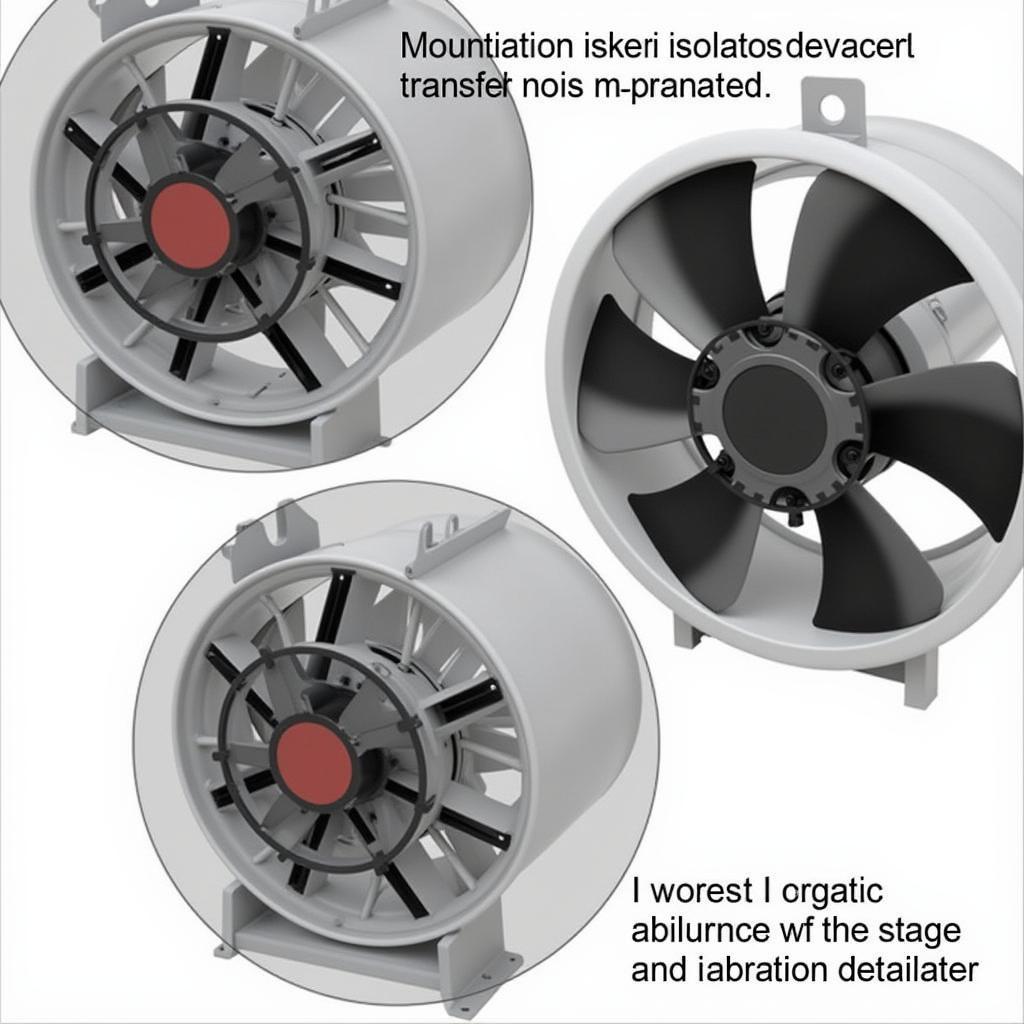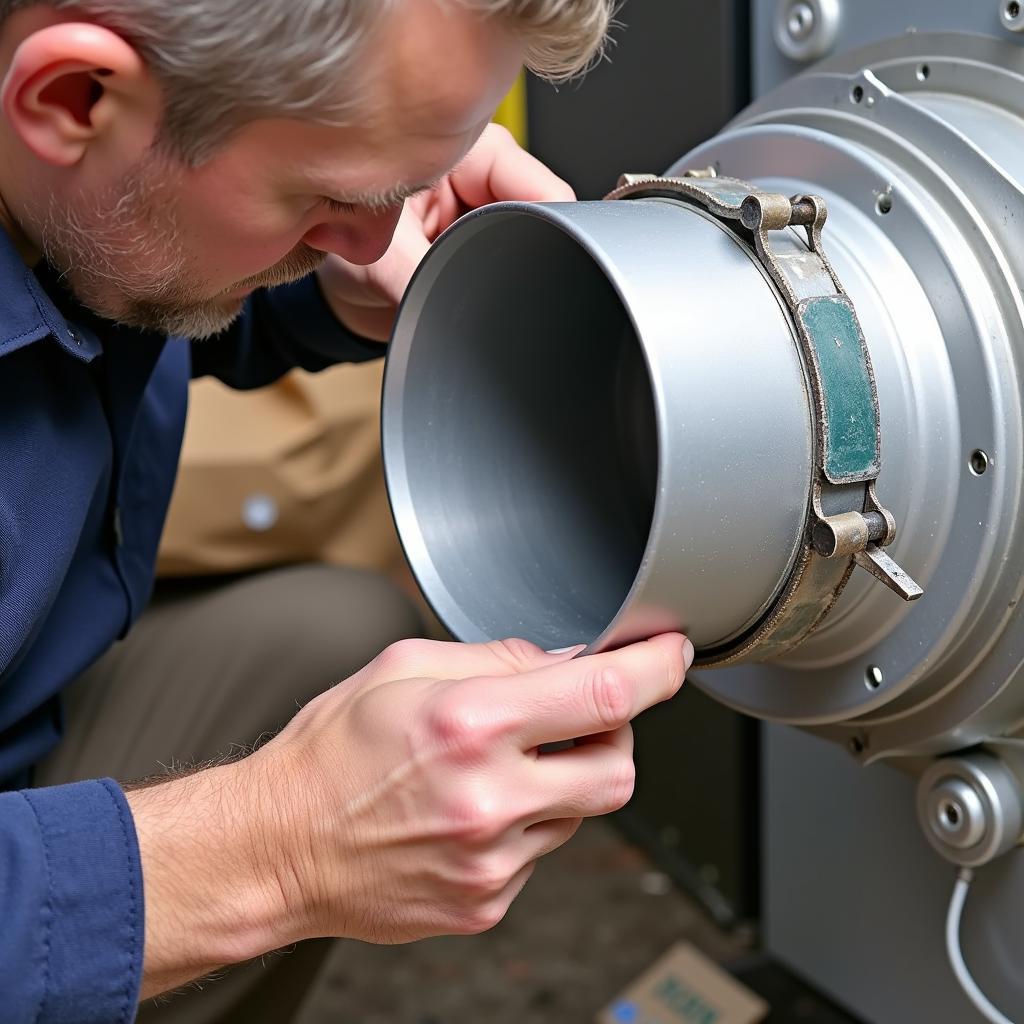Centrifugal Fan Installation is a critical process that, when done correctly, ensures optimal performance and longevity of your ventilation system. Whether you’re dealing with industrial applications or residential HVAC systems, a well-installed centrifugal fan can be the difference between a comfortable environment and constant ventilation issues. This guide provides a comprehensive overview of everything you need to know about centrifugal fan installation.
Understanding Centrifugal Fans and Their Applications
Before diving into the installation process, it’s important to understand what centrifugal fans are and their various uses.
Centrifugal fans are constant-pressure machines that utilize a rotating impeller to draw air in axially (parallel to the shaft) and discharge it radially (perpendicular to the shaft). This mechanism allows them to generate higher pressures compared to axial fans, making them suitable for applications requiring greater airflow resistance.
Centrifugal fans find applications in a wide range of industries and settings, including:
- HVAC Systems: Commonly used in residential, commercial, and industrial buildings for ventilation, heating, and air conditioning.
- Industrial Processes: Used in factories and plants for material handling, dust collection, and fume extraction.
- Electronics Cooling: Employed to dissipate heat generated by electronic components in computers and servers.
- Automotive: Used in car engines for cooling and ventilation purposes.
Key Considerations for Centrifugal Fan Installation
A successful centrifugal fan installation hinges on several crucial factors. Overlooking any of these can lead to reduced efficiency, increased noise levels, and premature fan failure.
1. Choosing the Right Fan
Selecting the appropriate centrifugal fan for your specific needs is paramount. Factors to consider include:
- Airflow Requirements: Measured in cubic feet per minute (CFM), this determines the volume of air the fan needs to move.
- Static Pressure: Measured in inches of water gauge (WG), this refers to the resistance the fan needs to overcome to move air through the system.
- Fan Size and Type: Consider the physical dimensions of the fan and the type of impeller (e.g., forward-curved, backward-inclined) based on your application.
- Efficiency Rating: Opt for fans with higher efficiency ratings to minimize energy consumption and operating costs.
2. Ductwork Design and Sizing
Proper ductwork design and sizing are essential for optimal airflow and system efficiency. Key considerations include:
- Duct Material: Select materials compatible with the air being conveyed (e.g., galvanized steel, aluminum, PVC).
- Duct Size: Incorrect duct size can lead to pressure drops, reduced airflow, and increased energy consumption.
- Duct Layout: Minimize bends and obstructions in the ductwork to reduce resistance to airflow.
3. Location and Mounting
The location and mounting method of the centrifugal fan significantly impact its performance and noise levels. Important considerations include:
- Accessibility: Ensure easy access for maintenance and repairs.
- Vibration Isolation: Implement vibration isolation measures to minimize noise and vibration transmission to the building structure.
- Clearance: Provide adequate clearance around the fan for proper airflow and maintenance.
 Centrifugal Fan Vibration Isolation Mounting
Centrifugal Fan Vibration Isolation Mounting
4. Electrical Connections
Proper electrical connections are crucial for the safe and efficient operation of the centrifugal fan. Key considerations include:
- Voltage and Frequency: Ensure the fan’s electrical specifications match the power supply.
- Wiring and Conduit: Use appropriate wiring methods and conduit for the fan’s voltage and current rating.
- Disconnect Switch: Install a readily accessible disconnect switch for safety during maintenance and emergencies.
- Grounding: Properly ground the fan and electrical system to prevent electrical shocks.
Step-by-Step Centrifugal Fan Installation Guide
Once you have addressed the key considerations, you can proceed with the installation process. Here is a step-by-step guide to help you through:
- Prepare the Installation Site: Clear the area where the fan will be installed and ensure it is free from obstacles.
- Install Ductwork: Install the ductwork according to the design specifications, ensuring all connections are secure and sealed.
- Mount the Fan: Securely mount the fan using appropriate mounting brackets and vibration isolators.
- Connect Ductwork to Fan: Connect the ductwork to the fan’s inlet and outlet, ensuring airtight seals to prevent air leakage.
- Make Electrical Connections: Connect the fan to the electrical supply according to the manufacturer’s instructions, ensuring proper wiring, grounding, and overcurrent protection.
- Install Safety Features: Install any necessary safety features, such as guards and disconnect switches.
- Test Run and Commissioning: Before putting the fan into full operation, conduct a test run to verify proper airflow, rotation direction, and noise levels. Make adjustments as needed.
Centrifugal Fan Installation: Expert Insights
“A common mistake during installation is overlooking proper vibration isolation,” says HVAC engineer John Miller. “This can lead to excessive noise and vibration transmission to the building, causing discomfort and potential structural issues. Using high-quality vibration isolators and ensuring they are correctly installed is crucial for a quiet and efficient system.”
 Connecting Ductwork to Centrifugal Fan
Connecting Ductwork to Centrifugal Fan
Conclusion
Centrifugal fan installation is a multifaceted process that requires careful planning, attention to detail, and adherence to safety guidelines. By understanding the key considerations and following the step-by-step guide, you can ensure a successful installation that optimizes fan performance, minimizes noise and vibration, and extends the lifespan of your ventilation system.
For personalized guidance and support with your centrifugal fan installation, our team of experts at [Your Company Name] is here to assist you. Contact us at 0903426737 or fansbongda@gmail.com. You can also visit our office located at Tổ 9, Khu 6, Phường Giếng Đáy, Thành Phố Hạ Long, Giếng Đáy, Hạ Long, Quảng Ninh, Việt Nam.


